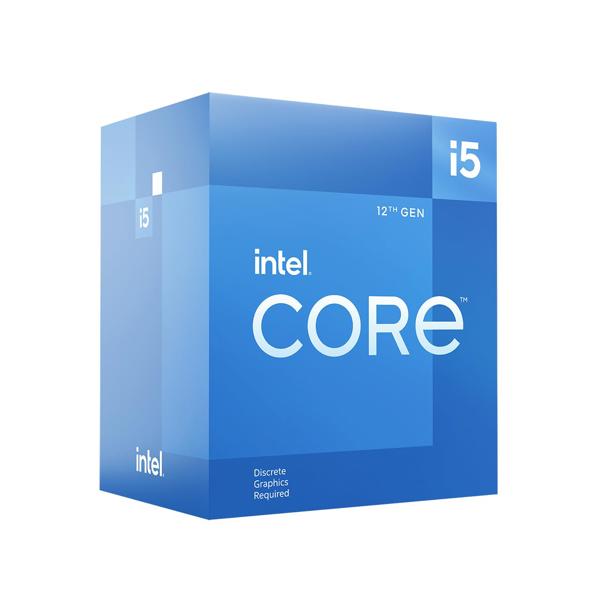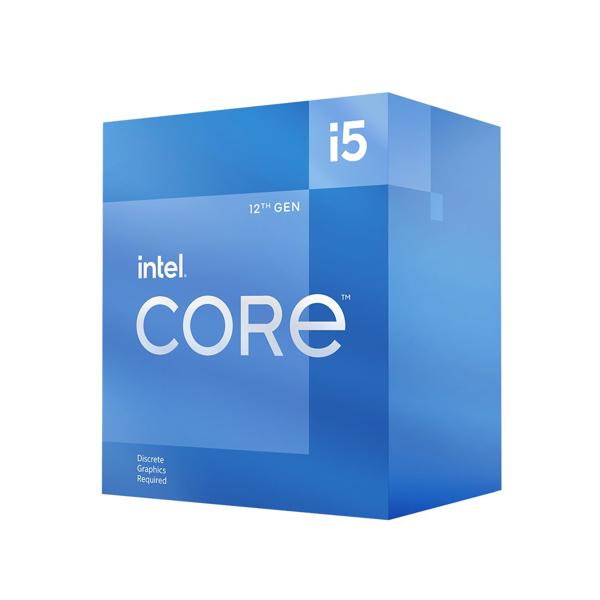



INTEL GEN 12TH I-5 12400
Intel's 12th generation processors, known as Alder Lake, introduce a hybrid architecture with performance and efficiency cores. This design boosts multitasking and gaming performance while supporting DDR5 memory and advanced technologies.
Features
The Intel Core i5-12400 is a mid-range desktop processor from Intel's 12th Gen Alder Lake family, offering strong performance for a variety of tasks, including gaming, productivity, and general computing. Featuring 6 cores and 12 threads, the i5-12400 is an excellent choice for users who want a solid balance between performance and value, without stepping into the higher-end price range of the i7 and i9 models. Unlike the 12400F, the i5-12400 includes integrated Intel UHD 730 graphics, which is an added benefit for users who don't plan to use a discrete GPU.
Core Specifications:
Core Configuration:
- Cores: 6 Performance cores (P-cores)
- Threads: 12 threads (due to Hyper-Threading technology)
Clock Speeds:
- Base Clock: 2.5 GHz
- Max Turbo Frequency: Up to 4.4 GHz
Cache:
- L3 Cache: 18 MB Intel Smart Cache
- L2 Cache: 1.5 MB (shared across cores)
Thermal Design Power (TDP):
- Base TDP: 65W
- Max Turbo Power: 117W
Socket: LGA 1700
Key Features:
6-Core, 12-Thread Configuration:
The i5-12400 is equipped with 6 Performance cores (P-cores) and Hyper-Threading support, resulting in 12 threads. This configuration enables the processor to efficiently handle a variety of workloads, from light multitasking and gaming to more intensive applications like productivity software, video conferencing, and light content creation. The additional threads allow better performance during multi-tasking scenarios and provide smoother experiences when using demanding applications that can leverage multiple threads.
Intel UHD 730 Graphics:
One of the major differences between the 12400 and its 12400F counterpart is the inclusion of Intel UHD 730 graphics. This integrated GPU is beneficial for users who don't require high-end gaming performance or don't have a dedicated GPU. It allows for basic graphical tasks such as video playback, casual gaming, and running standard applications without needing an additional graphics card. While not suitable for high-end gaming, the UHD 730 is capable of handling day-to-day tasks effectively.
Performance Boost with Turbo Frequency:
The i5-12400 can boost its clock speed up to 4.4 GHz when under load, thanks to Intel's Turbo Boost technology. This feature ensures that the processor can deliver peak performance during demanding tasks like gaming, video rendering, or other high-performance applications. The 2.5 GHz base clock is efficient enough for most tasks, but the ability to ramp up to higher speeds makes this processor versatile and responsive in dynamic environments.
Intel 7 Process Technology:
The i5-12400 is built on Intel’s 7nm SuperFin process technology, which offers improved energy efficiency, performance, and thermal management compared to older process nodes. This 7nm architecture helps balance performance and power consumption, making the 12400 a great choice for users seeking a chip that performs well without consuming excessive power.
Intel Smart Cache:
The processor comes with an 18 MB Intel Smart Cache, which ensures that frequently accessed data is readily available for the processor. The large cache size helps improve performance by reducing latency, especially when running memory-intensive tasks or working with large datasets. This cache helps the processor avoid unnecessary memory calls, speeding up performance and increasing responsiveness.
Performance and Use Cases:
Gaming:
The Intel Core i5-12400 provides solid gaming performance for users who want to play at 1080p or 1440p resolutions. While it doesn't feature overclocking capabilities (as some of its higher-end siblings do), the chip still offers excellent performance in most modern games when paired with a discrete GPU. Users will find that titles such as Fortnite, Valorant, League of Legends, and Call of Duty will run smoothly with the i5-12400 paired with a mid-tier GPU, such as the NVIDIA RTX 3060 or AMD Radeon RX 6600.
The inclusion of Intel UHD 730 graphics allows for light gaming as well, making the 12400 a suitable choice for users on a budget or those who don't want a discrete GPU for basic tasks or older games.
Productivity:
The i5-12400 is highly capable for productivity tasks such as office work, email management, and web browsing. It excels at handling typical office software (e.g., Microsoft Office Suite), and users will experience smooth performance even with a large number of browser tabs open or multiple applications running in the background. The i5-12400 can handle multitasking well, making it suitable for users who work with spreadsheets, presentations, or light video conferencing.
Light Content Creation:
While it may not match the performance of more powerful processors like the i7 or i9, the i5-12400 still performs well in light content creation tasks. Video editing, audio production, and graphic design can all be carried out with ease, especially for projects in 1080p or 4K at lower settings. Software like Adobe Premiere Pro, DaVinci Resolve, and Photoshop will run without issue for users working on basic to moderate-level projects.
However, for demanding tasks such as 4K video rendering, professional content creators might prefer a processor with more cores and threads (e.g., i7 or i9).
Everyday Computing:
For users who need a processor that can handle general computing tasks, the i5-12400 is a great option. It can easily handle routine tasks like browsing the web, streaming media, editing documents, and video conferencing. The i5-12400 offers solid performance across a wide variety of everyday applications, making it perfect for home or office use.
Power Efficiency:
- Thermal Design Power (TDP):
- With a base TDP of 65W, the i5-12400 is power-efficient, making it an attractive option for users who need a high-performance processor without compromising on energy consumption. The chip’s efficiency makes it suitable for use in small form-factor systems or budget builds.
- Max Turbo Power (117W):
- The 12400 can briefly peak at 117W under high loads, but its overall power draw remains reasonable. This ensures good performance without an excessive need for cooling solutions.
Cooling:
While the i5-12400 does generate heat during demanding tasks, it doesn't require extreme cooling solutions. Most users will find that an air cooler or the stock Intel cooler included in the box will suffice for the processor’s thermal management. High-end liquid coolers or advanced cooling setups are not necessary for typical use cases.
Specifications
| TOTAL NUMBER OF CORE | 6 |
|---|---|
| TOTAL NUMBER OF PERFORMANCE CORES | 6 |
| TOTAL NUMBER OF EFFICIENT CORES | 0 |
| TOTAL NUMBER OF THREADS | 12 |
| MAX RAM MEMORY SUPPORT | 128 GB |
| MOTHERBOARD SUPPORT | 600 / 700 SERIES |
| MEMORY SUPPORT | DDR-4 UPTO 3200 MT/S, DDR-5 UPTO 4800 MT/S |
| MAX MEMORY BANDWIDTH | 76.8 GB/S |
| EFFICIENT CORE BASE FREQUENCY | 2.50 GHZ |
| EFFICIENT CORE MAX TURBO FREQUENCY | 2.50 GHZ |
| PERFORMANCE CORE BASE FREQUENCY | 4.40 GHZ |
| PERFORMANCE CORE MAX TURBO FREQUENCY | 4.40 GHZ |
| SOCKET TYPE | LGA 1700 |
| LITHOGRAPHY | 7NM |
| TOTAL CACHE | 18 MB |
| TOTAL L2 CACHE | 7.5 MB |
| THERMAL JUNCTION | 100 |
| PCIe REVISION | 4 |
| MAX NUMBER OF PCIe LANES | 20 |
| PROCESSOR TDP | 117 W |
| INBUILT GRAPHIC PROCESSING UNIT | YES |
| GPU NAME | INTEL UHD GRAPHIC 730 |
| GPU BASE FREQUENCY | 300 MHZ |
| GPU MAX DYNAMIC FREQUENCY | 1.45 GHZ |
| GPU VIDEO MAX MEMORY | HALF OF SYSTEM MEMORY |